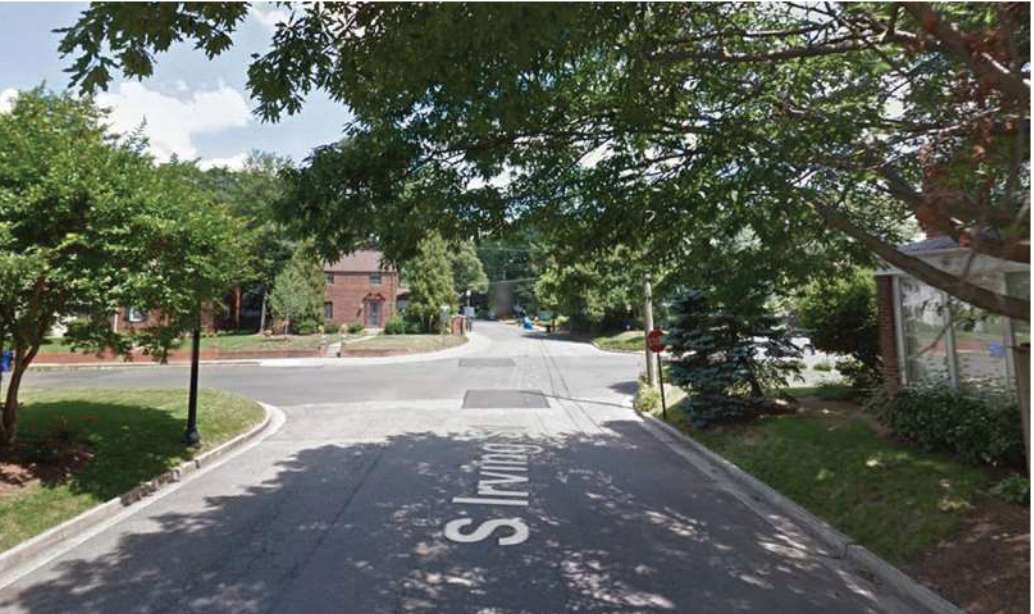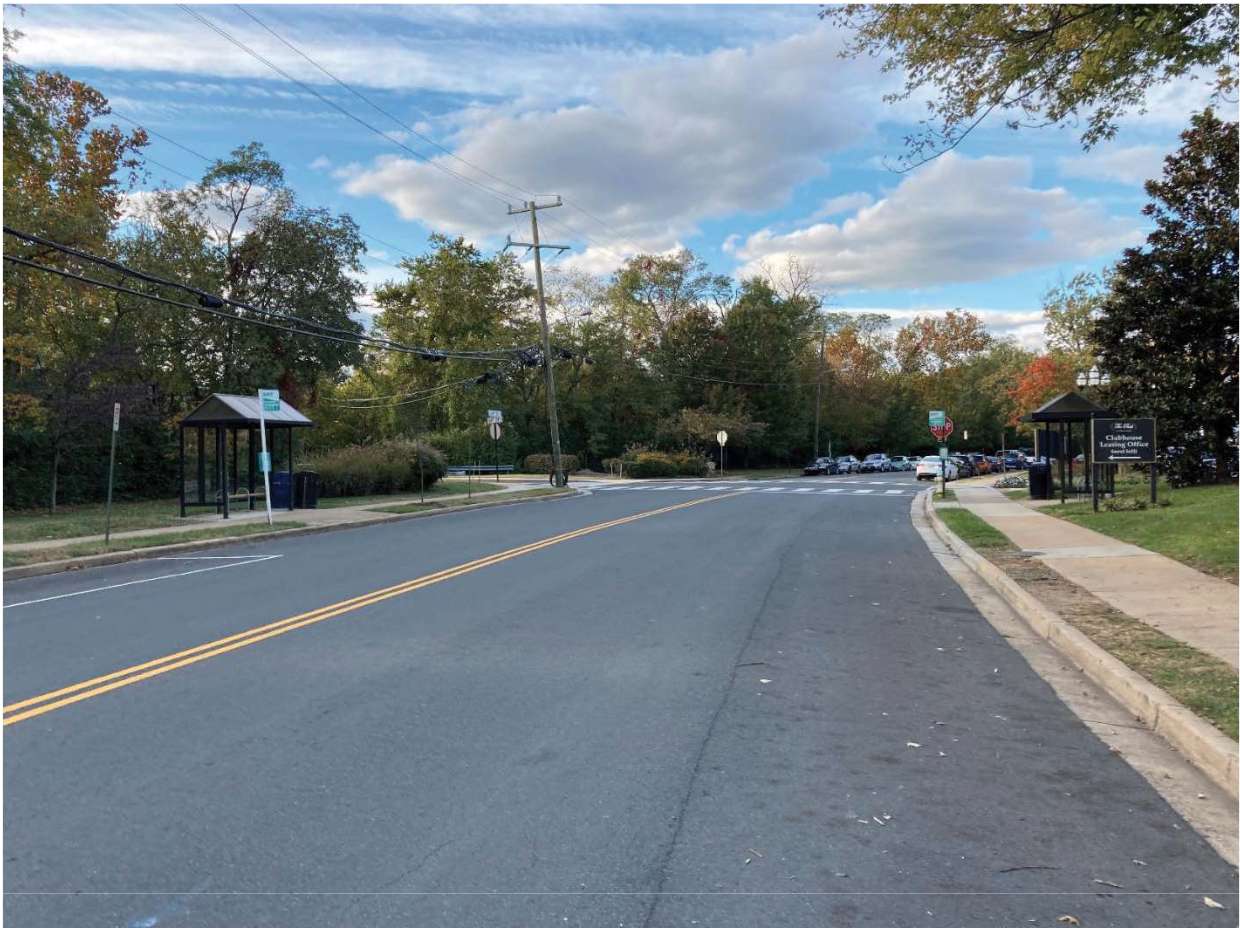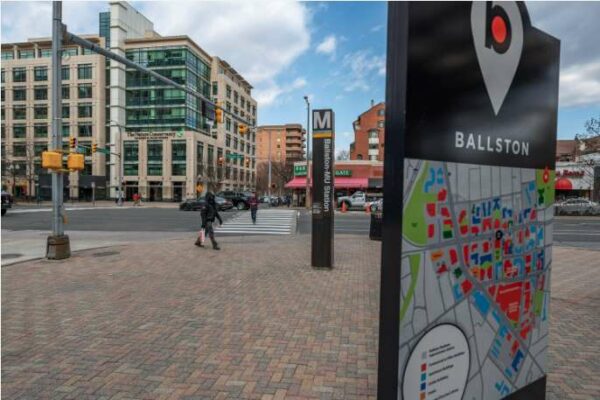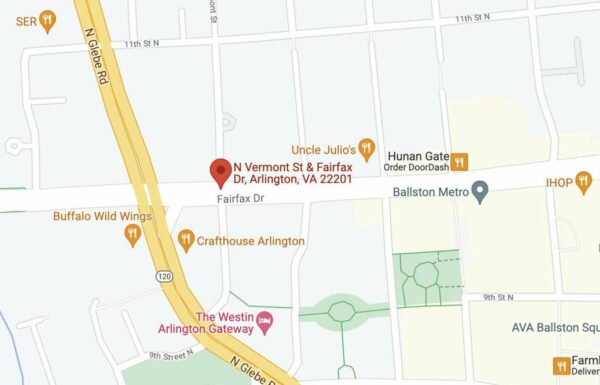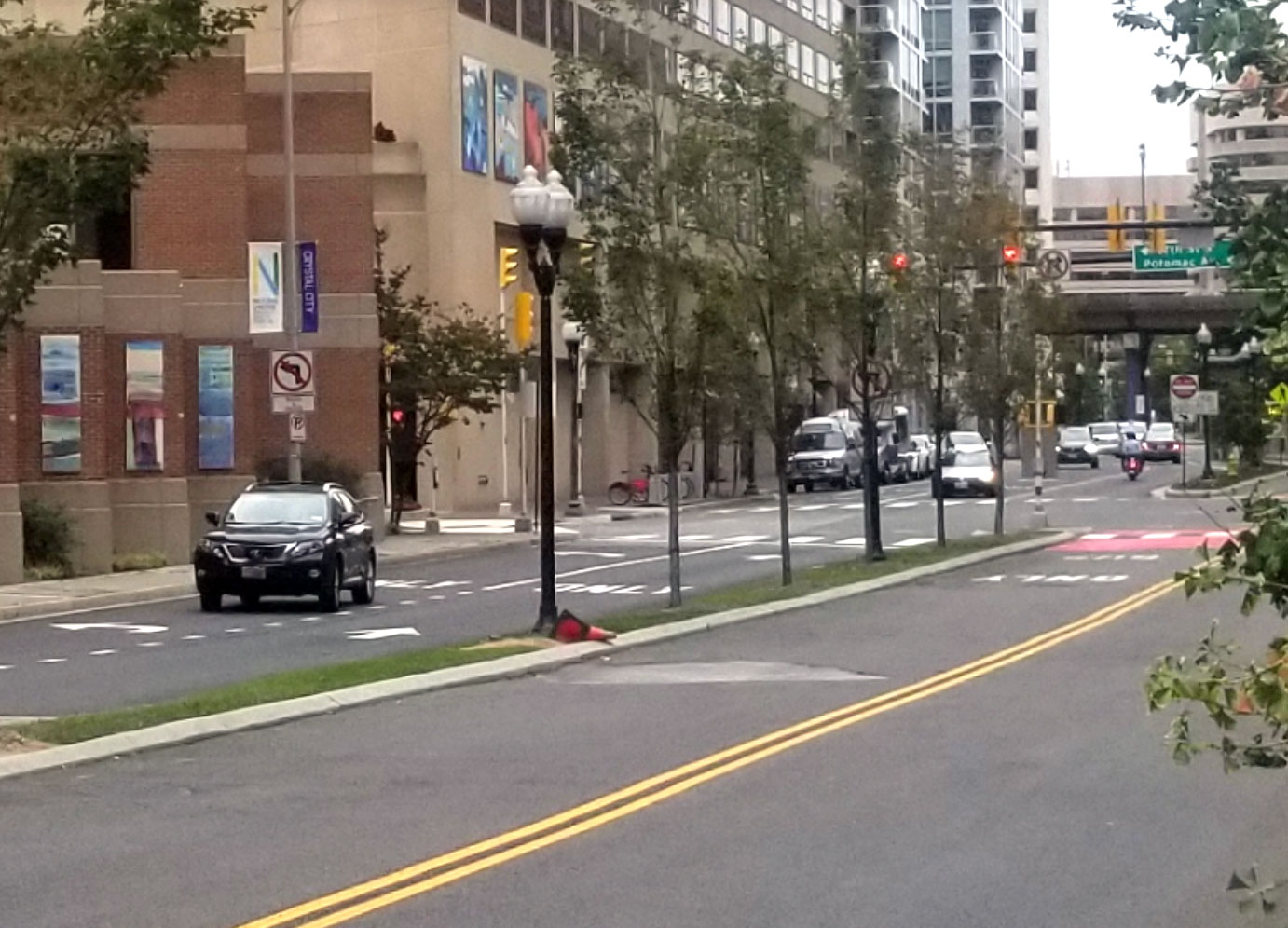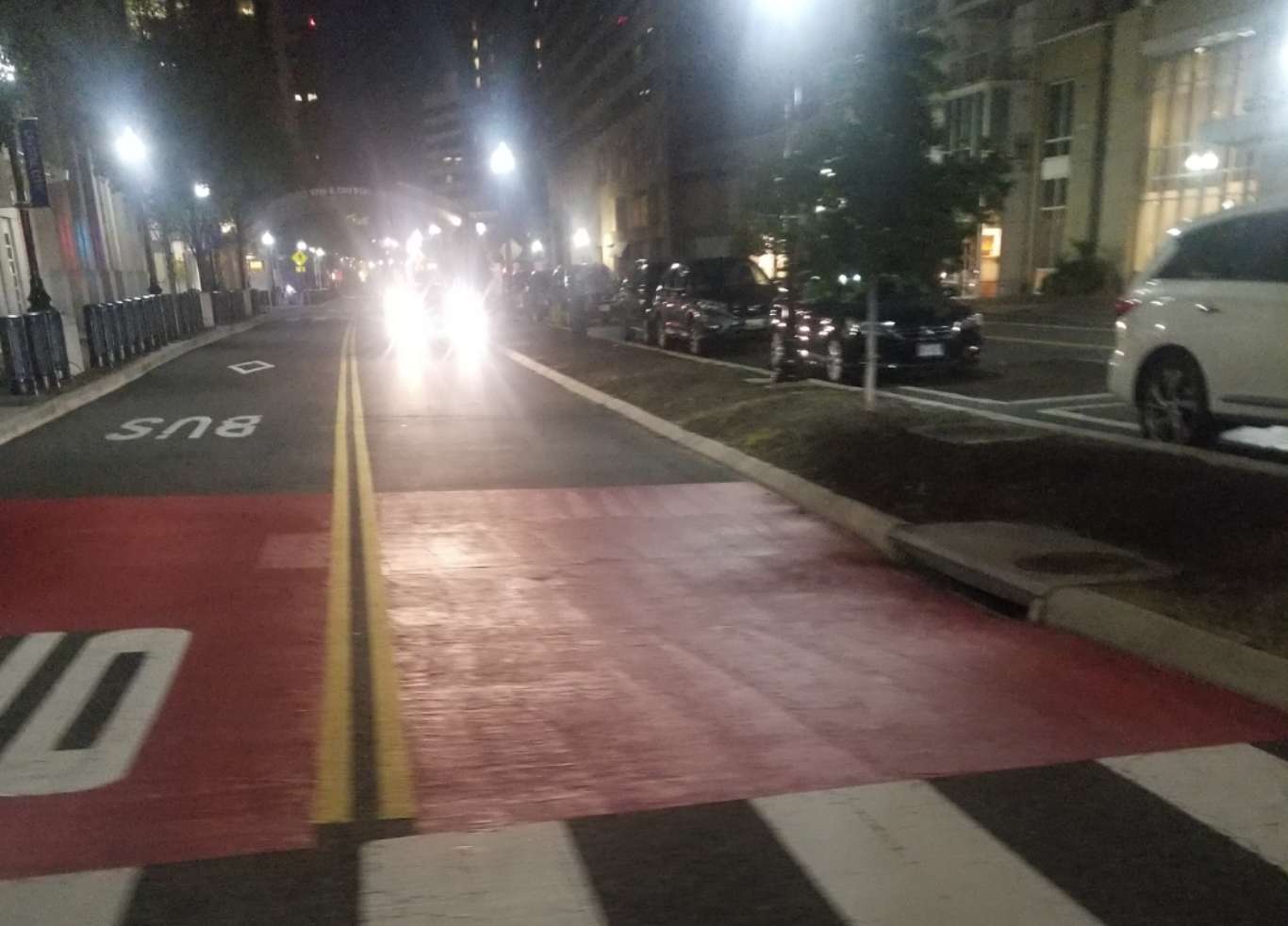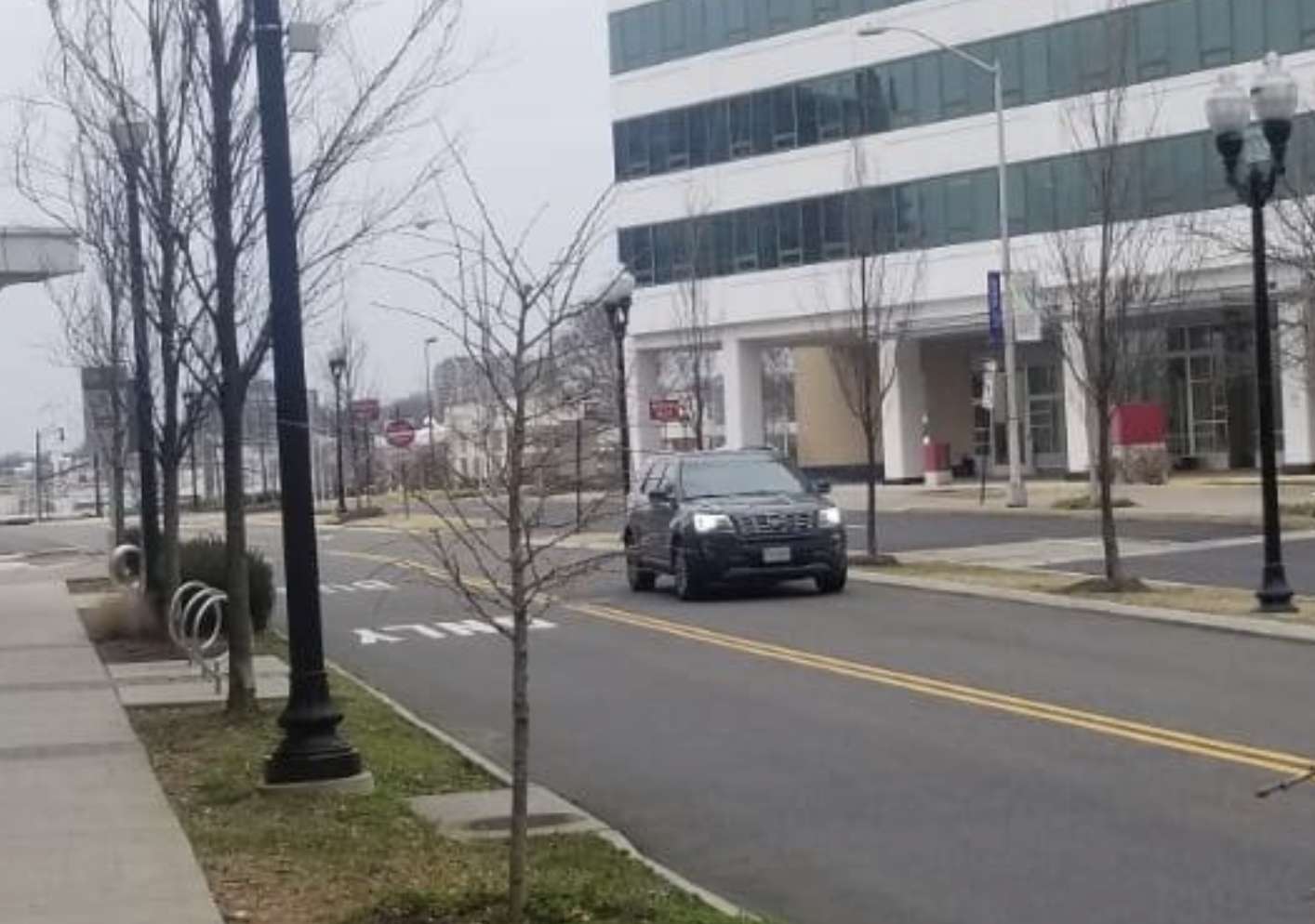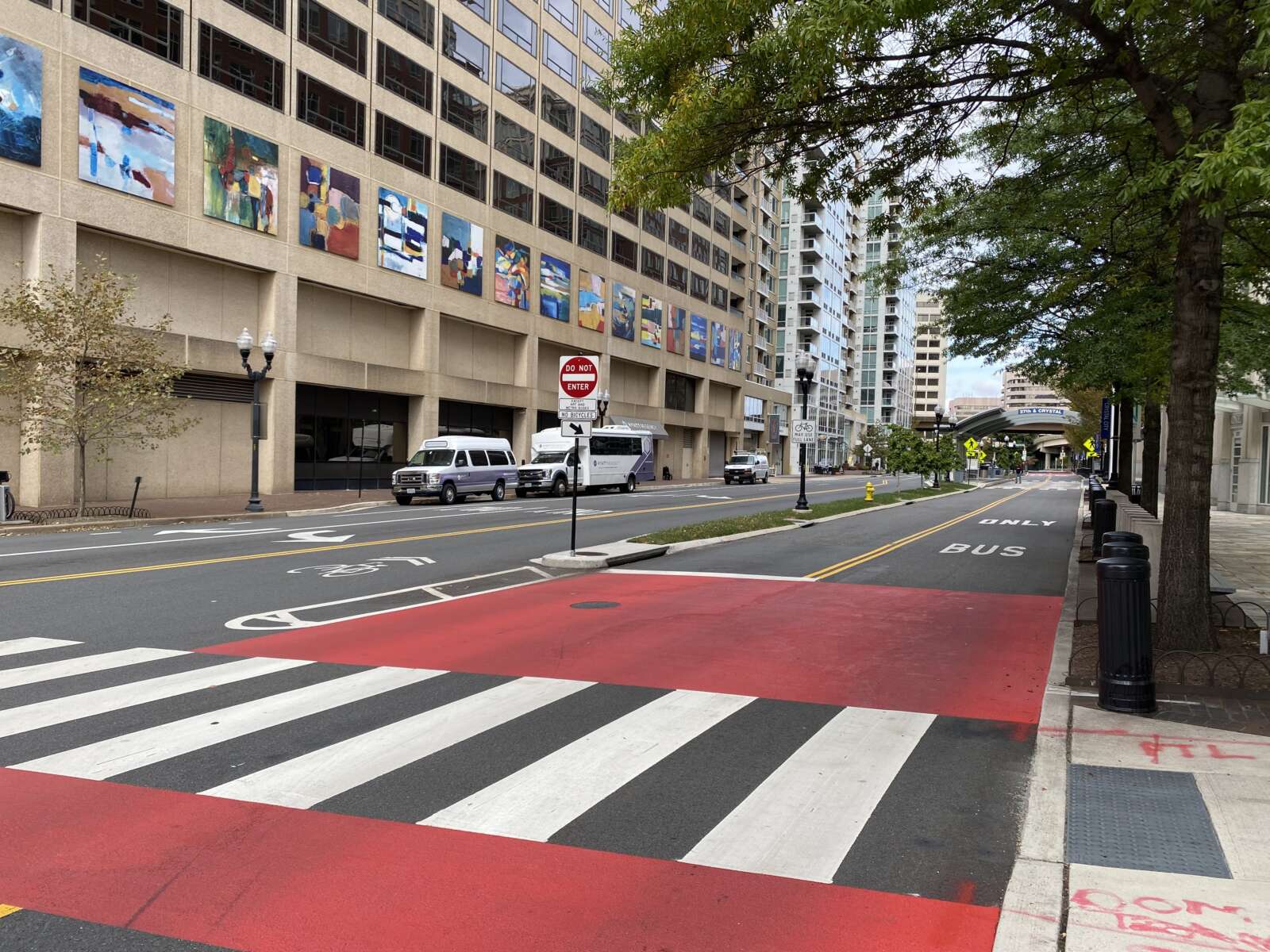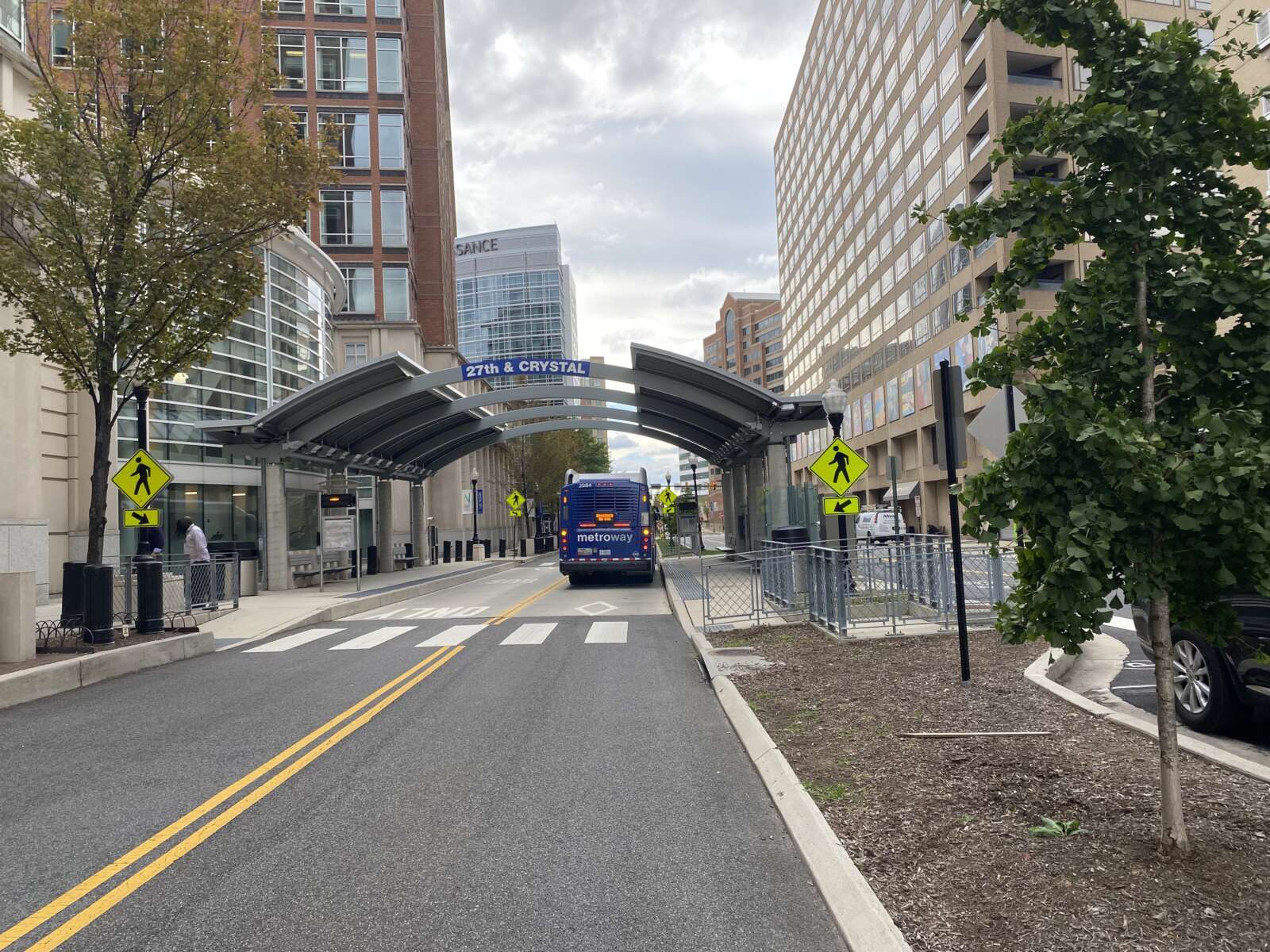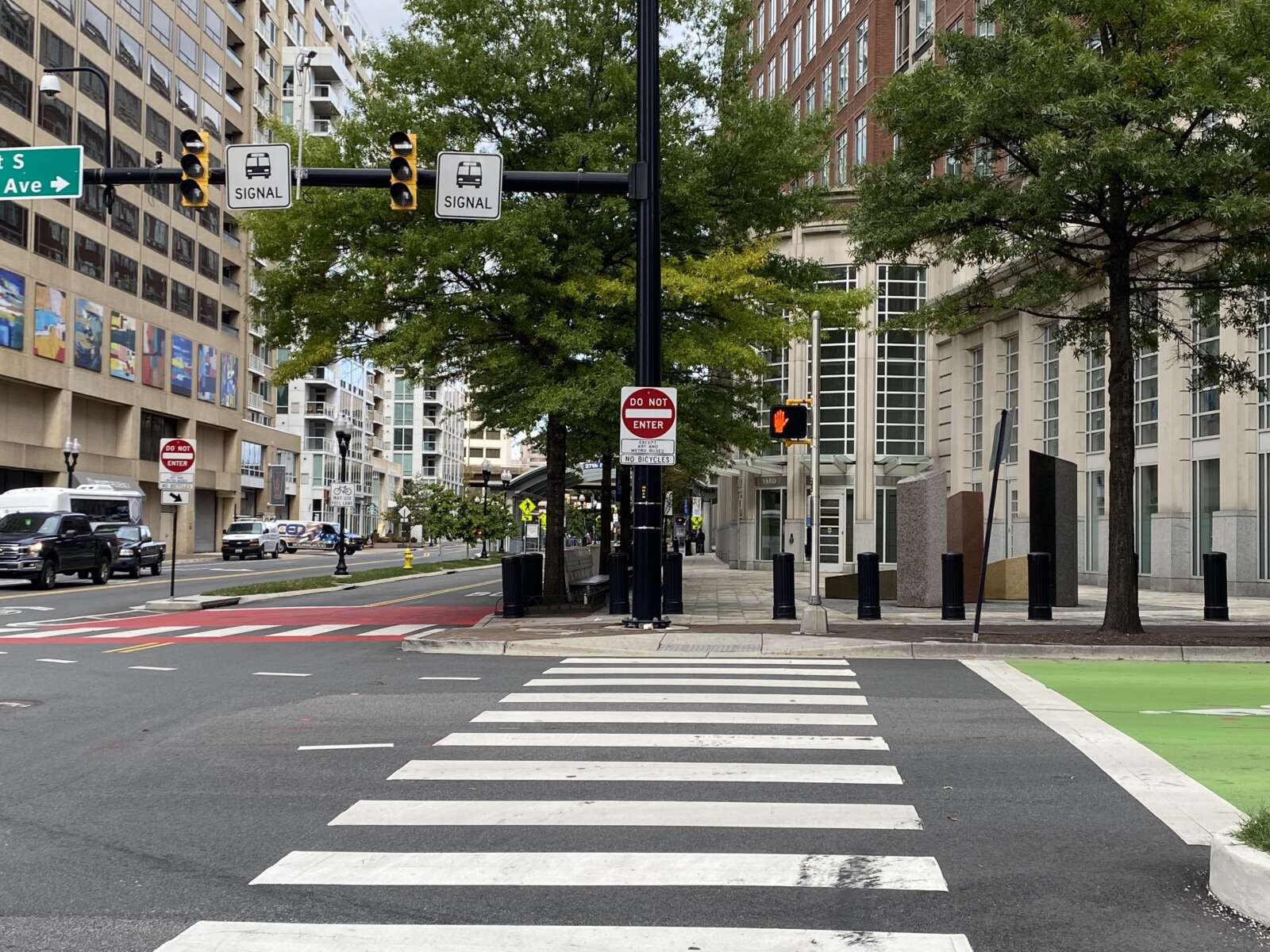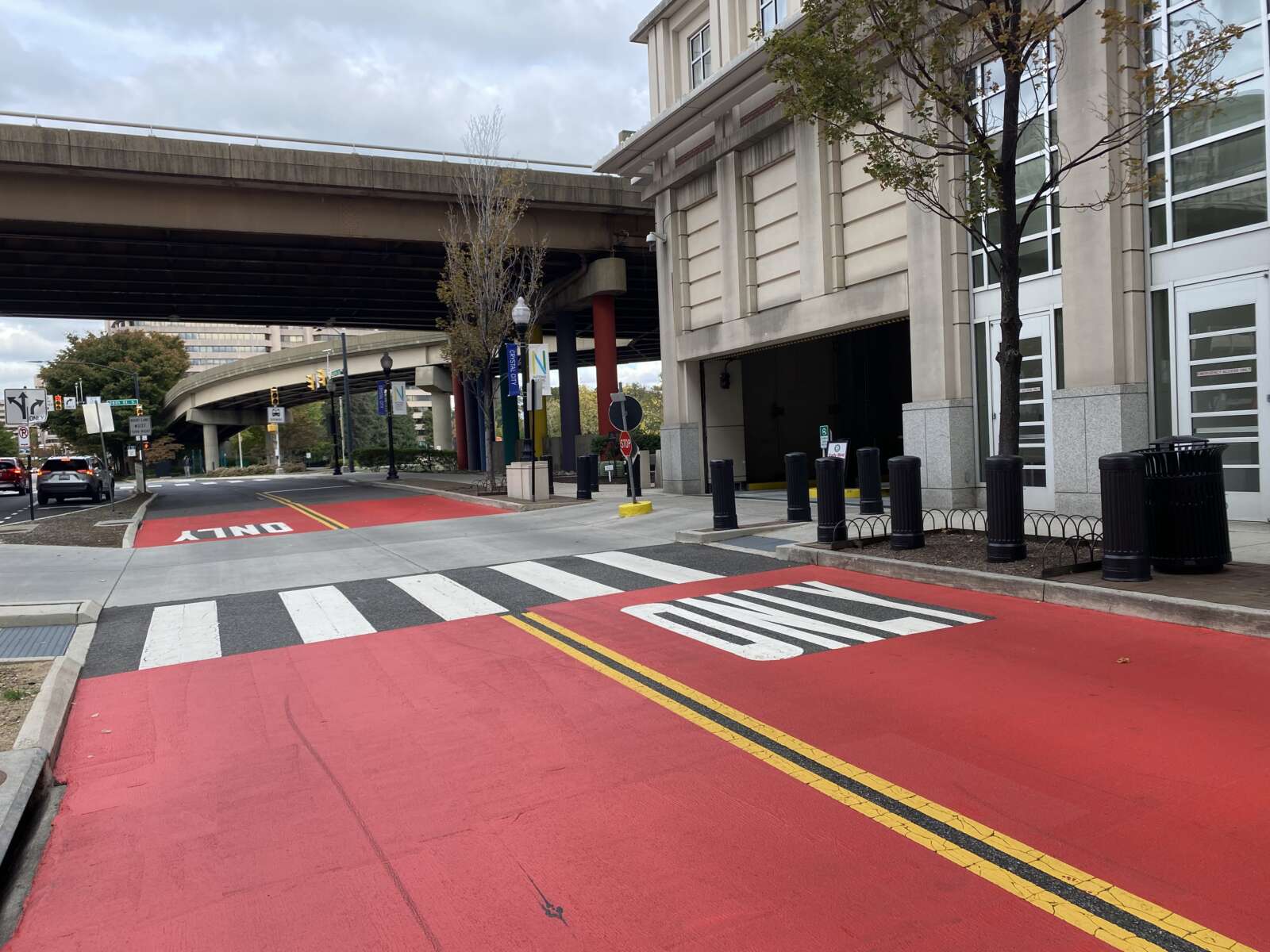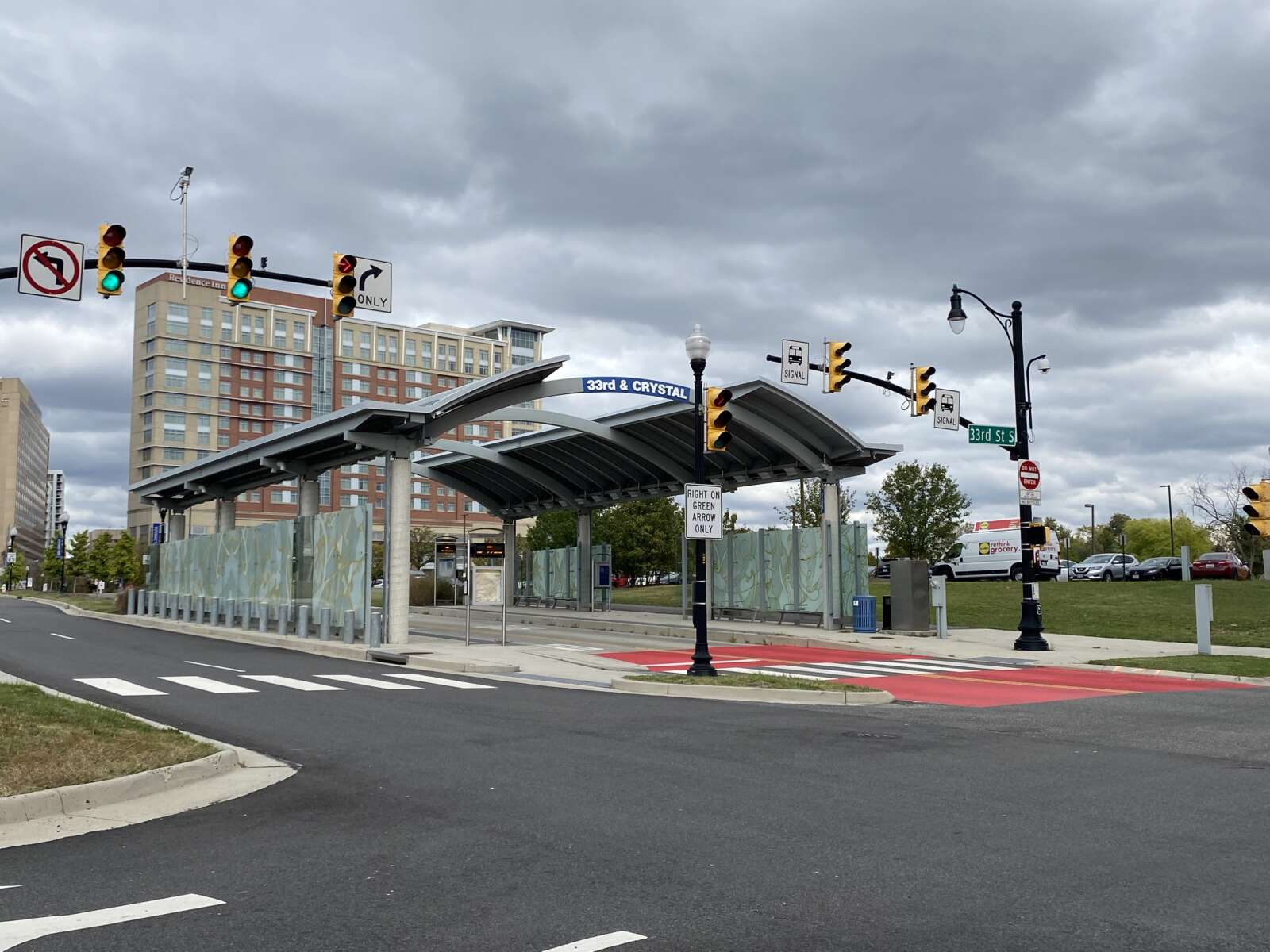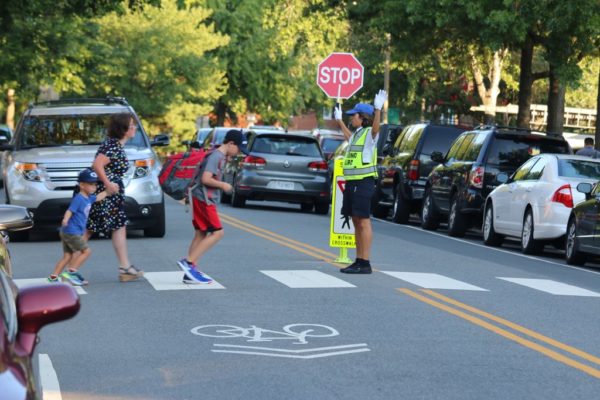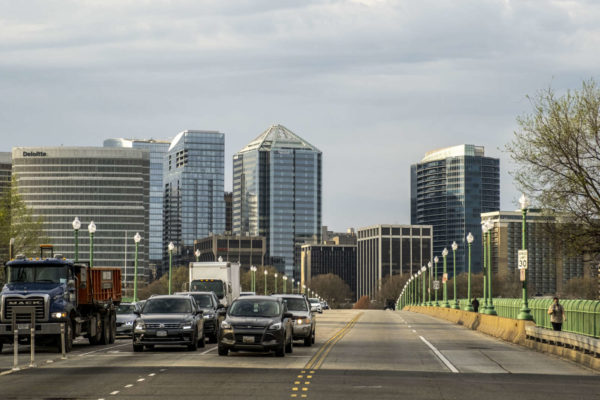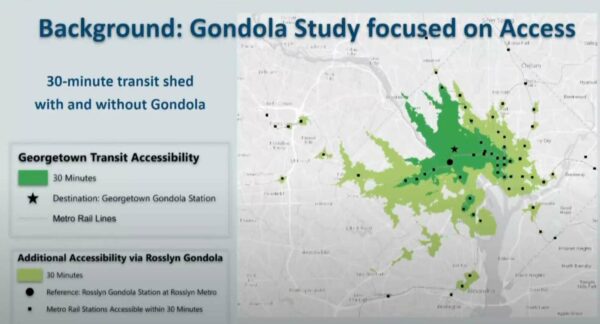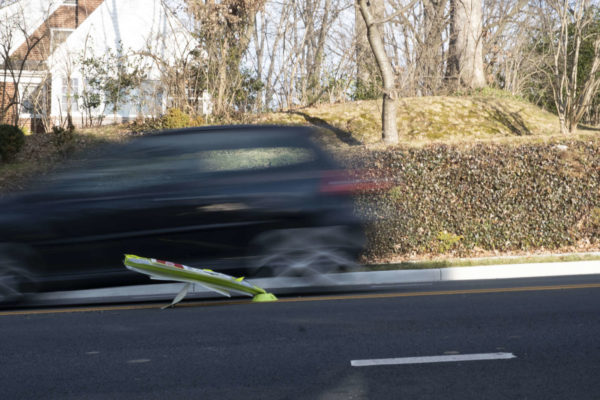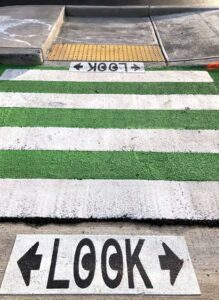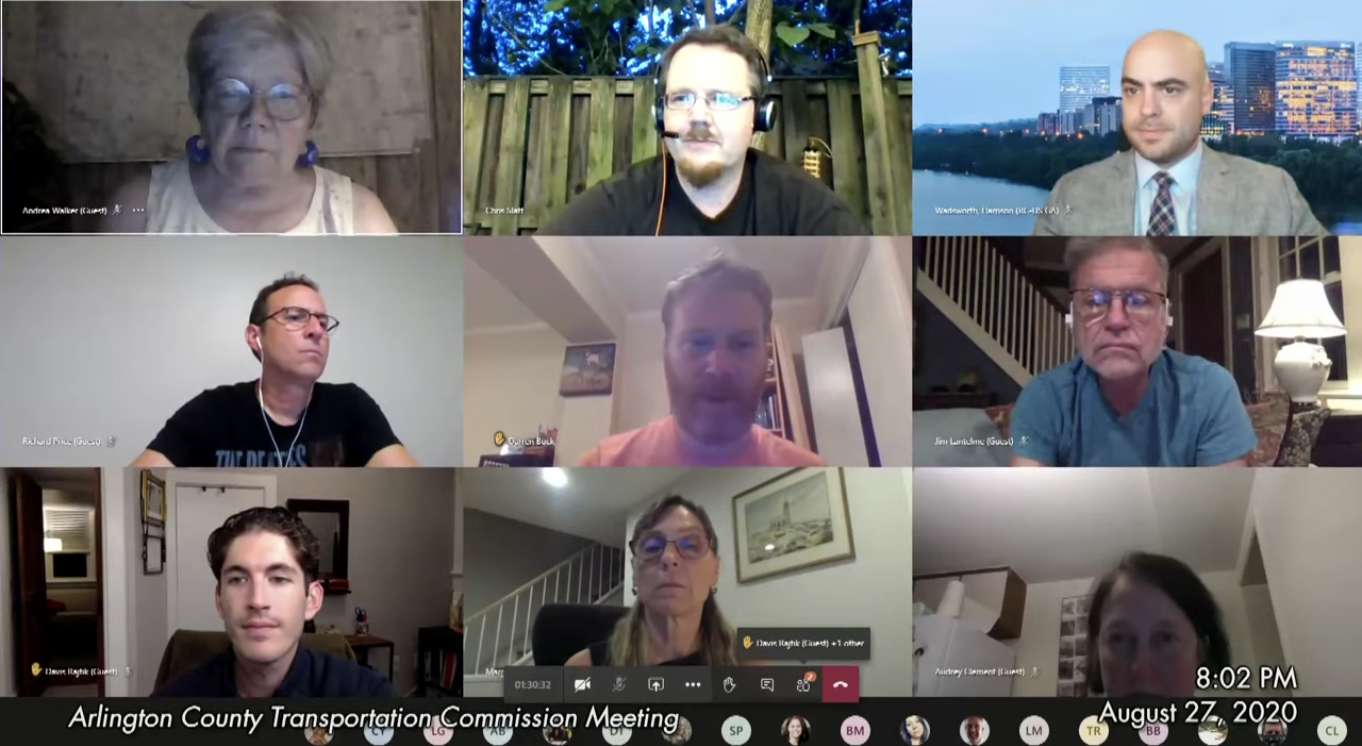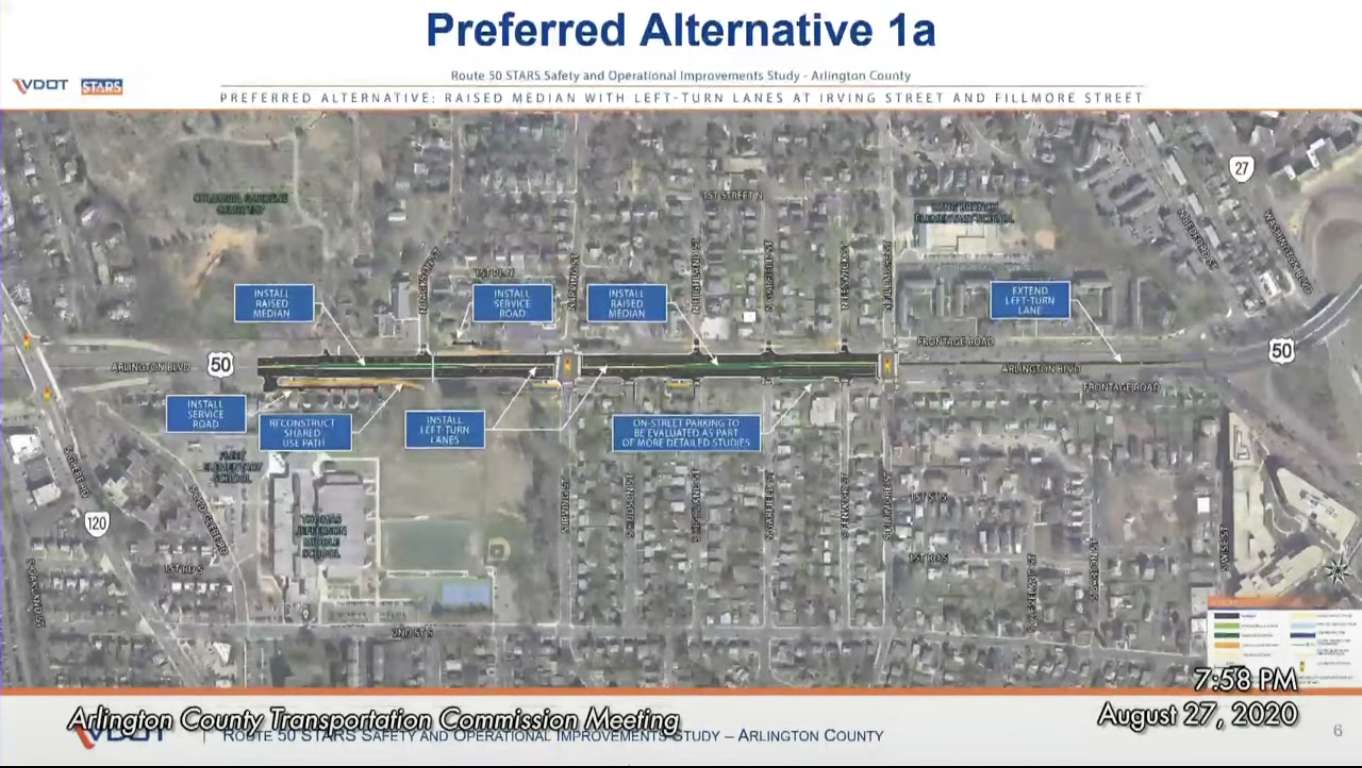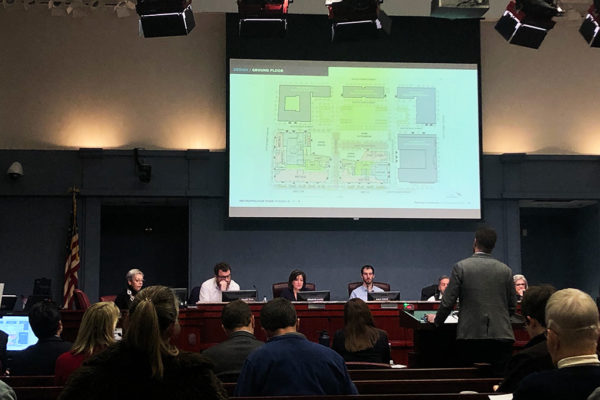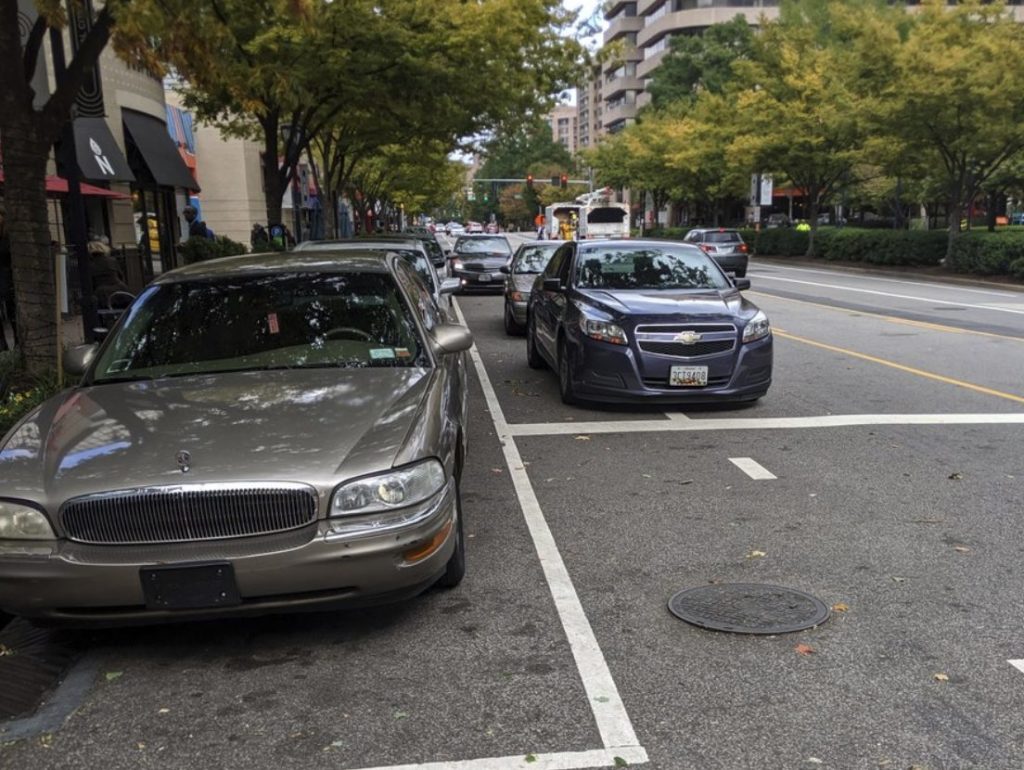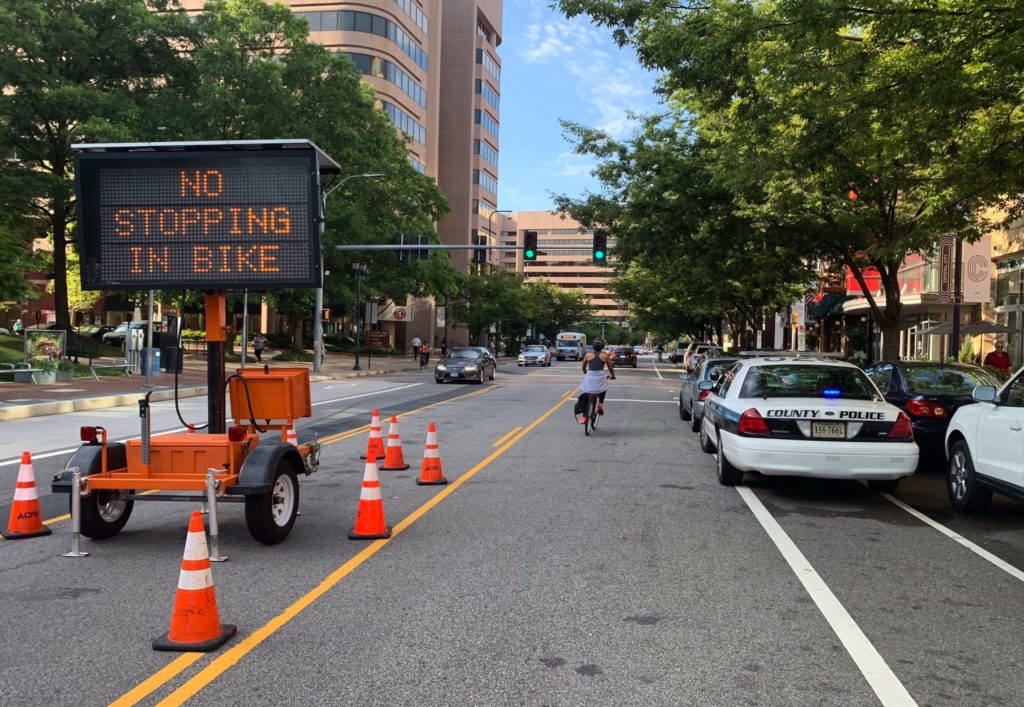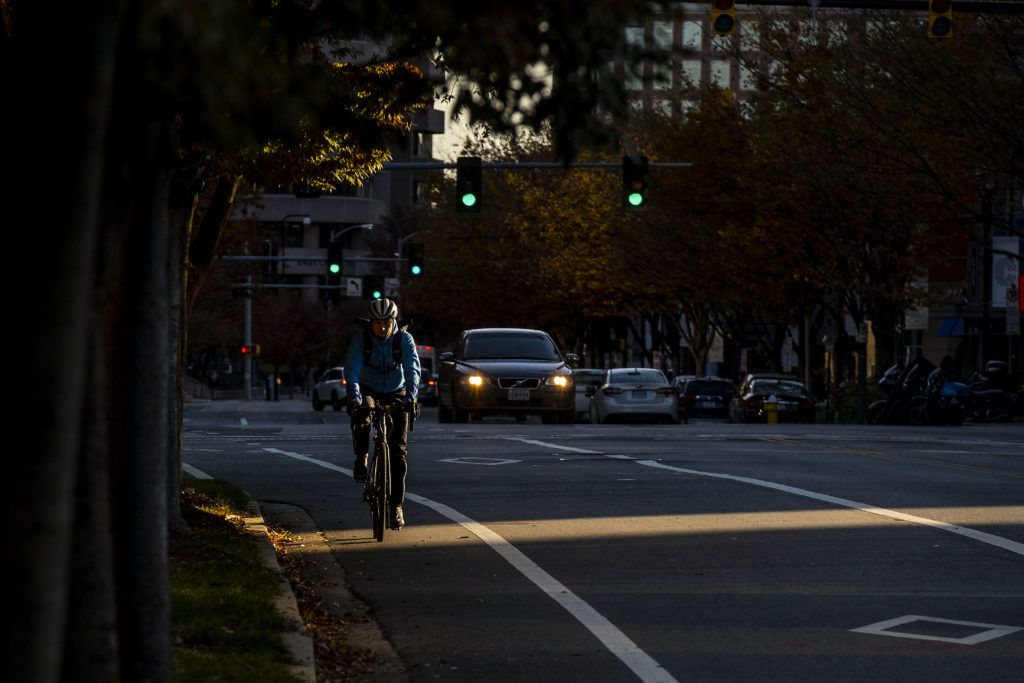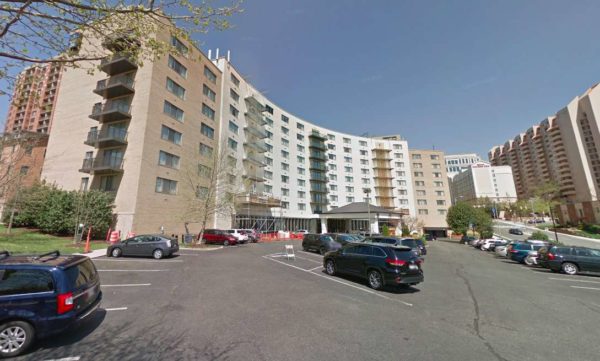Arlington residents may see improved sidewalks and pedestrian crossings in a few neighborhoods in the near future.
The County Board approved funding for four projects at its meeting on Saturday (June 18).
Among the projects:
- Constructing one block of missing sidewalk on S. Irving Street between 6th and 7th Streets S.
- Constructing a section of accessible sidewalk at the service alley entrance of the AT&T building on 9th Street S. between S. Walter Reed Drive and Highland Street, near Columbia Pike.
- Constructing new transit stops, intersections, mid-block pedestrian crossing and bicycle racks at three pedestrian crossings on 28th Street S. between S. Meade Street and 26th Street S.
- Constructing pedestrian crossings on N. Fairfax Drive between Arlington Blvd. and N. Barton Street, near Rocky Run Park.
The four projects are projected to cost around $1.7 million in total, according to a board report.
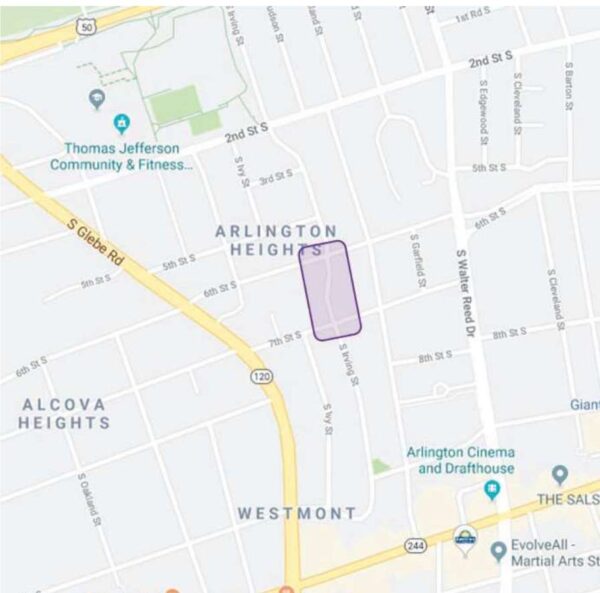
The proposed project on S. Irving Street is set to build a continuous accessible sidewalk on one side of the road, between 6th Street S. and 7th Street S., which includes accessible curb ramps, existing streetlamps and on-street parking.
A little over 50% of local survey respondents believed the proposed project would make them feel “much safer” while walking there. Some expressed concern about the distance and visibility of crossing 7th Street S., according to the project’s community engagement summary.
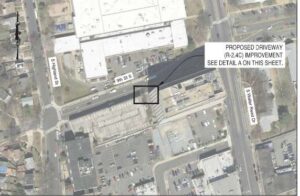
The proposed project on 9th Street S. would modify the driveway to the AT&T building so that its curbs can be in an accessible sidewalk condition compliant with federal law. The county collaborated with the company for the design plan.
“This project will support a safe walking environment adjacent to the AT&T building, where there is high traffic volume and children at play in the area,” AT&T Mid-Atlantic Region Operations Manager Robert Weaver stated in a letter of support.
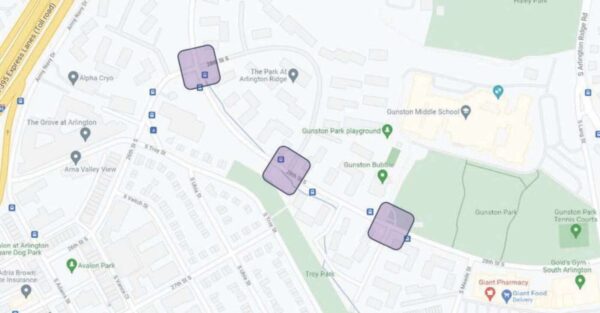
The proposed project on 28th Street S. aims to reduce speeding and shorten the distance of pedestrian crossing by narrowing the roadway. This location was high on the county’s list of potential reconstruction because it has a history of car crashes and speeding.
Thirty percent of respondents who walked in that area believed the proposed project would make them feel “much safer.” Many respondents also expressed concern for cyclists along that road. However, the county determined that the road is too narrow for a bike lane, according to the project’s community engagement summary.
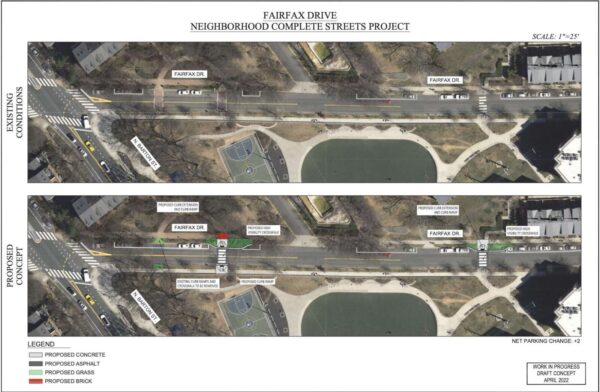
The proposed project on Fairfax Drive, near Rocky Run Park, aims to increase the visibility of pedestrians crossing the street and shorten the crossing distance. It also proposes removing the mid-block crossing closest to the intersection with N. Barton Street.
Many people who gave feedback to the county raised concerns with the crossing removal, however. Almost 20% of survey respondents who walked in the said the proposed changes would make them feel less safe when walking, according to the project’s community engagement summary.
But the county will still remove it because it is less than 100 feet away from a crosswalk controlled by a “All Way Stop” sign.
All four projects were part of the Neighborhood Complete Streets Program, which aims to “make streets safe for all users of all ages and abilities” and “preserve or enhance neighborhood character,” according to its commission’s website.
The Arlington County Transportation Commission earlier voted unanimously to support the projects, but opined that the Irving Street could have been better.
More from a letter sent to the Board by the Transportation Commission, below.


